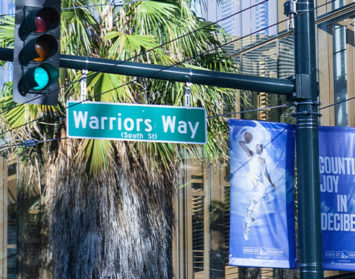We’ve talked in recent columns about the unrealistic leasing rates office space landlords try to extract in order to subsidize the absurdly high prices they’re paying for office buildings nowadays. As important as this issue is, we have ignored some of the other bloated costs that office tenants face these days.
I refer in this case to tenant improvements — the amenities that make an office space functional for the tenant. Included here are interior walls, carpeting, ceiling tiles, light fixtures, air conditioning systems, doors, kitchens and the like. Typically, much of the attention during lease negotiation centers on the size of the space, number years and the rental rate, and to a lesser extent, how much the landlord is willing to give for a tenant improvement allowance to improve or change the space to fit the new tenant’s needs.
I, as well as my company colleagues, always make controlling tenant improvement costs a high priority in working with our tenant clients, but that’s not always the case in lease negotiations, especially when the landlord’s broker is “representing” the tenant as well.
But I digress. The plain fact is tenant improvement costs are sky high and soaring even higher. In San Diego County, the cost of tenant improvements has been increasing roughly 1 percent per month over the past four years with no end in sight. Five years ago, a tenant moving into new or unimproved space in a downtown office building would have needed about $45 per square foot to install average — nothing special or fancy — tenant improvements. That same space today would cost $65 per square foot.
That cost doesn’t take into account if the work is to be performed by a union contractor, which adds another $10 per square foot — for a whopping $75 per square foot.
For “plain vanilla” space.
Why the big increases? Architectural fees for designing interior spaces have remained fairly level at $2.50 to $3.50 per square foot. General contractor fees also have remained stable, roughly 4 percent to 5 percent of total construction costs, as has insurance, which adds another 1 percent. Construction management fees likewise are not contributing to the sharp cost rises; they remain at the 3 percent to 4 percent level.
The problem lies with subcontractor fees — an area that has literally gone berserk in cost spiraling.
Subcontractors have never been busier than they have in recent history and they’re taking advantage of the fact that since they can’t do everybody’s work, they are “cherry-picking” the richest jobs. They couldn’t care less if they don’t get a particular job because of high costs; there have been more than enough desperate tenants who will pay whatever it takes. These subs can’t remember the last time they’ve had to sharpen their pencil to cut a deal based on price; it’s been a take-it-or-leave-it market.
In all fairness to the subs, the cost of materials likewise has gone berserk; so, some of their increases are legitimate. However, the subs’ increasing bids are far in excess of any increases in materials expenses.
The one piece of good news is that the days of subcontractor gluttony are numbered as the construction industry slows down. Meanwhile, I would find and sharpen those pencil stubs if I were a sub.
Union labor is the other major cost factor. Unionized labor adds about 15 percent to 20 percent to the cost — without adding one whit of benefit. Their presence and influence in the San Diego economy — especially in commercial real estate properties — would take your breath away.
Let me illustrate the point with just one instance. One of our clients is relocating to a union labor-controlled building in which all subcontractor labor is union — including the one union painter in town. The painter alone was 75 percent more expensive than his non-union counterpart. There’s no option to use a less-expensive painter in a closed shop such as this building.
If this isn’t economic extortion, I don’t know what would be. Fortunately, extortion never wins out and ultimately competitive forces from outside will prevail to break the union stranglehold on free market operations.
Yet another cost factor for tenants to watch is second- and third-generation office space equipped with obsolete mechanical systems. I’m referring here to HVAC systems and heat pumps that no longer work. Last month’s heat wave revealed myriad cases in which tenants discovered that the air conditioning systems didn’t work in the older buildings they recently occupied.
Other less obvious items include new codes for fire and life safety that could easily run into tens of thousands of dollars.
The point is this: Leasing office space is an expensive and complex process in which there are open and hidden costs aplenty. The leasing rate and leasehold term are but the beginning of the costs and negotiations process.
Tenants need to pay attention — very close attention — to what it’s going to cost to adapt the space to fit their needs and what the factors are that influence those additional costs to keep tenant improvements from becoming tenant destruction costs.
Jason Hughes is founder of Hughes Marino, an award-winning commercial real estate company with offices across the nation. A pioneer in the field of tenant representation, Jason has exclusively represented tenants and buyers for more than 30 years. Contact Jason at 1-844-662-6635 or jason@hughesmarino.com to learn more.










